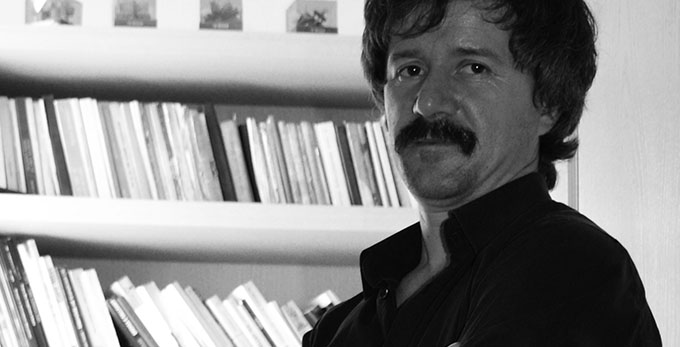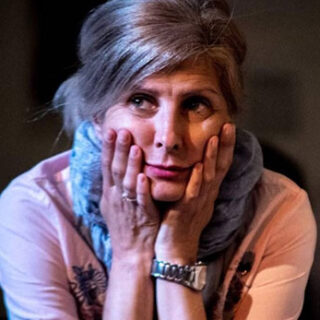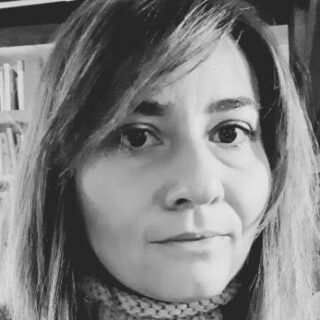In 2014 I wrote a text on the Venice Biennale focusing on reading the historic strata of Kosovo’s cities how multiple layers created as a complex result of historic, social circumstances and even of political systems. It was not hard for me to identify the clear traces of every period. The will of Emperor Justinian who, through the glory of Ulpiana, sought to leave his mark on the lands where he hailed from, was clearly visible, just like the influence of the Orthodox church on the Medieval social order through churches and monasteries. The five hundred years of Ottoman rule left traces in every aspect of life by dominating the outlines of localities with their numerous domes and minarets. The stains of the Austro-Hungarian neo-classicism – regardless how indirectly – they pass hereby and all the way to the post-World War Two Yugoslavia, which extended the slogan of “absolute equality of the self-governing socialist order and uniformity of the masses without social classes” to the city development policies via buildings balanced both in cost and expression. The most difficult period for me to articulate was largely – and still is nowadays – the one following the recent war (since 1999). This may be so due to its close time distance. After all, it is also a physical rule that one cannot see in broader plane the things that are nearer. From a general perspective I have defined this period as confusing, disconcerted, lacking a clear vision, which is also mirrored in in the same confusing, disconcerted measures and forms and lack of vision in its architecture. I still attempt to clarify it, at least by providing my entirely individual viewpoint, without insisting at all on its absolute veracity.

Right after the war there was a huge boom of construction in Prishtina and other Kosovo cities. Initially, it appeared to be a need for shelter, on the one side because of the devastation of the war, and on the other side due to prohibition of construction during the ten-year regime of Milošević. However, soon enough, from a need for shelter it was transformed into a greed for riches. The city began to be treated as a gigantic construction plot where a building had to be erected on every unoccupied spot. Individual houses and residential areas, built with love in the ‘80s, covered by tasteful greenery such as in the quarters of Pejton, Bregu i Diellit, Dodona, Tophane or Emshir, were forced to hive those up to the builders in compensation of some apartments. In other words, plots that once communicated gracefully with the individual houses placed in compliance with their size thus creating a harmony amongst them, were violated by the gigantic multi-apartment buildings. In the absence of cadastral books that were stolen by the Milošević regime while they were leaving Kosovo, various wrongdoers had the opportunity to build on numerous public spaces multi-apartment buildings for commercial purposes only.
Another thing that significantly affected the disfigurement of the city was the way socially owned enterprises were privatised. In most cases, the property of these socially owned enterprises was privatised not to revive their industrial or commercial character but seen through the lens of being attractive plots for construction. The most flagrant case if that of “Fazita” quarter in the heart of Prishtina, which overnight was transformed from an economic area with super low density of constructions to a hot construction area for buildings up to 40 stories tall, without giving a second thought to doing any additional interventions public infrastructure needed!

These three scenarios of the city’s destruction: the assault on the individual residence neighbourhoods, the assault on public properties, and the abuse with the privatisation process were not accidental but rather followed a clear strategy for super-profit for the builders. Cities were treated as construction plots with the purpose of maximal appropriation of riches while forgetting entirely the quality of life of citizens, addressing common needs and in the process also destroying, disfiguring, and neglecting the presence of violent and traumatic past.
Therefore, we would not be able to understand this twenty-year period without looking at how those few public spaces left were treated, such as central squares, promenades, parks, etc., that could not be privatized or usurped. Although they were not privatized it does not mean they were not misused. The powers of this time were very clear about the importance of demonstrating their power by being present in the centre of the public. Thus, despite not making any efforts to create any new public spaces, they made no compromise in being present at all costs in the existing ones. For a few years after the war, to continue nowadays, the public spaces were filled with sculptures depicting the protagonists of the recent war. So far, it is quite understandable. They did not do anything that all powers, at least in the last 2500 years of civilisations around the world did not. What is obvious though is the way HOW THEY DID IT?! This in fact leads us to understand WHY THEY DID IT?!
All these sculptures, erected on all squares around Kosovo can easily be divided into two categories. The first category, the one where sculptures feature severe flaws in proportions, made by amateur authors, and the second, the one where sculptures are made correctly within the principles of the post-World War Two socialist realism. The latter, mainly done by prominent sculptors from the Republic of Albania where this style was highly developed, often achieve perfection within this style which yet is insufficient to enjoy the status of an artwork as it disregards the necessary component of WORK – TIME. Therefore, we easily note both in the first and second instances that the arrival of these protagonists in the public spaces more than a sincere willingness to honour their sacrifices is a political will to impose and highlight WHO BROUGHT THE FREEDOM. Thus, the entire artistic focus of these works in on detailing and emphasizing the military weaponry and less the psychology and intellect of the protagonists and not at all their sublime ideal: FREEDOM. So, the hero of our freedom may have an intellectual past, such as Hamëz Jashari – teacher, Agim Ramadani – poet and artist, Edmond Hoxha – student, but cast in bronze they cannot ever appear to be without a RIFLE, as it should be emphasized that freedom was a result of the RIFLE alone and in no way of any other activity. This, including the necessary aesthetic socialist-realist speech that was a result of the explicit request of those who commissioned the sculptures of the incoming political power, which is connected with socialist-realism on the ideological plane, wished to demonstrate their political power in this space, and it had to match the political ideology they represented. This is how they laid the foundations of their political future by manifesting their power in the space.

Finally, I do not know whether 20 years are sufficient to name a period with its own name but if had to do that, based on the fundamental function of architecture – which is to provide the best living facilities, from what the areas constructed in the last twenty years, the name that would best fit it would be ARCHITORTURE.
Arbër Sadiki (1977) an architect, lecturer, critic. He holds the degree of Doctor of Technical Sciences in the Field of Architecture and Urbanism from the University of Belgrade. His focused area of research is linked to the relationship between social circumstances and architecture.
Assistant curator of the Kosovo pavilion at the 14th Venice Biennale. Nominee of Aga Khan Award for Architecture, Geneva. Recipient of the award “Annual Prize for Scientific Work in the Field of Cultural Heritage”, 2020, awarded by the Ministry of Culture, for his publication entitled: “Architecture of Public Buildings in Prishtina: 1945-1990, Social and Shaping Factors”.




